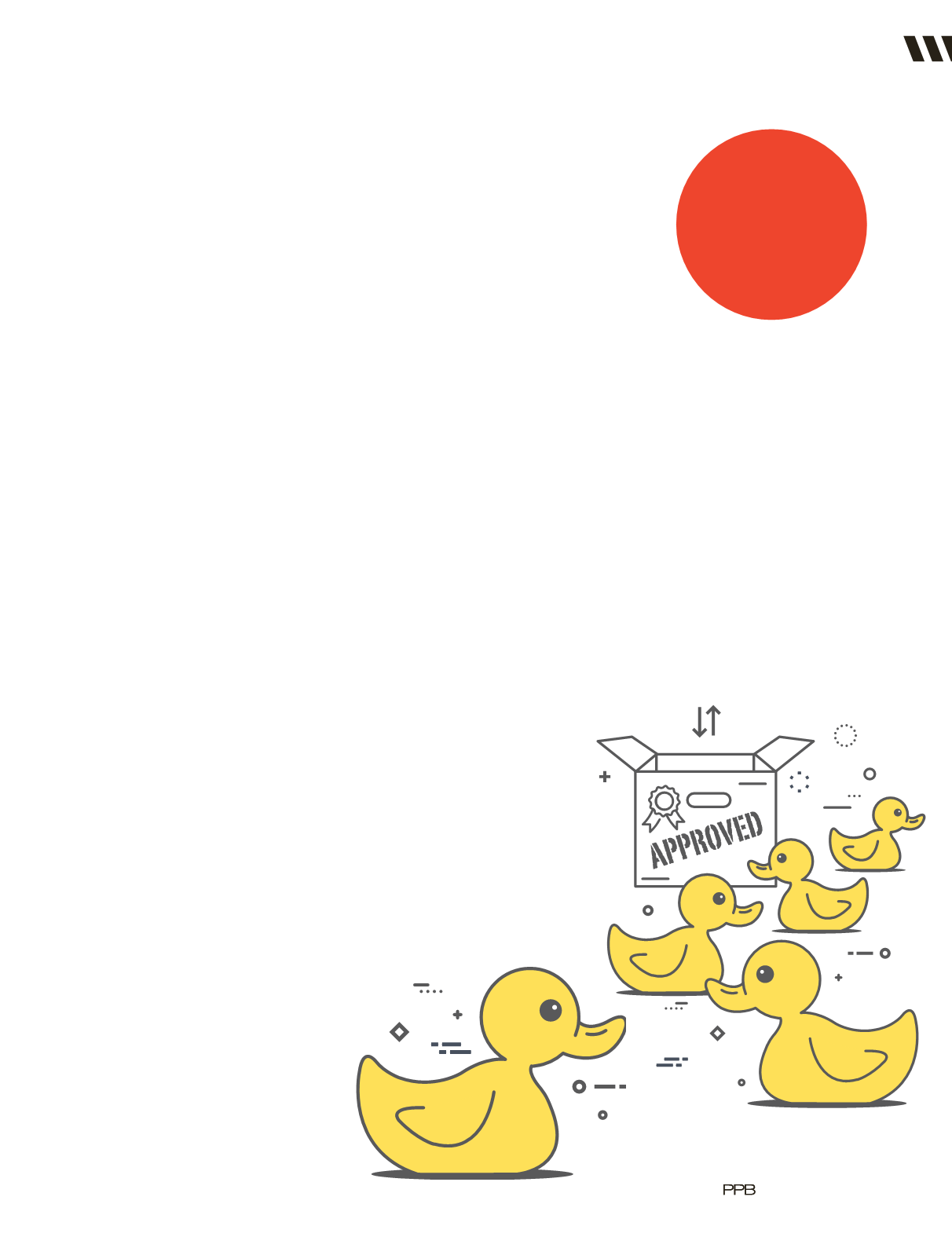

and cosmetics, sunglasses, first aid kids
and more. Learn the key considerations
for each of these products. For example,
food containers, like drinkware, need to
be tested to verify that chemicals from
the container will not leach into the food
or drink. This list is just an overview. You
can get a more complete list, category by
category, from any of the major testing labs.
4
Develop a standard checklist of
questions to ask every client for every
project you work on. For example:
What kind of event is the product for?
How will it be used? Who is the intended
audience? If there are children, what are
their ages? In which states or countries will
the product be distributed? Does the client
have any compliance requirements that
exceed mandatory requirements?
Then,
use the information you learn to help you
select the most appropriate products and to
properly advise your supplier.
5
If you find out that the intended audience
includes children, make sure the
products you select are age appropriate,
even if there are no specific compliance
requirements.
There is nomandatory
regulation to prevent you from selecting a
string backpack for a pre-school camp event,
but a corded product for very young children
is probably not themost prudent choice.
Similarly, don’t select a product that would
break into shards if a six-year old threw it on
a cement floor, because sooner or later that’s
probably going to happen. Common sense is
the best rule here.
6
If children are involved, always
require CPSIA compliance no matter
the children’s ages.
CPSIA is a
complicated law that doesn’t always make
common sense. For the most part, as
noted earlier, CPSIA focuses on children’s
products, which it defines as products
primarily intended for children 12 years
of age or younger. The CPSC has issued
guidance as towhat “primarily intended”
means but you should ignore it. If children
are involved, don’t try to figure out if the law
technically applies—just make sure your
product complies.
Let’s say you pick a product like a sports
water bottle for a PTA fund raiser and
the imprint is not something obviously
juvenile like Elmo orWinnie the Pooh.
Since the product has equal appeal to all
ages, including young children, CPSC
might say that the bottle is a
general use
item
not subject to CPSIA requirements.
Now assume that bottle is decoratedwith
a lead-containing ink and a well-meaning
consumer advocacy group finds out about
it and issues a news release criticizing your
client for distributing leaded products to
children. Is your client going towant to stand
up at a news conference and say, “Well, our
vendor told us the bottle isn’t technically
covered by the lead rules.” Of course not. At
that point, it is a public relations nightmare
for your client and the damage has been
done, regardless of whether the product is
technically compliant.
If you think this example is far-fetched,
searchGoogle for theWegman’s grocery
bag recall after a consumer group found
lead in its reusable grocery bags, or a similar
exposé by a Tampa TV stationwhich
led tomillions of these bags being
recalled. In both cases, no compliance
violations were involved—only the
common-sense fear about putting your
family’s food in a container containing
harmful lead—but the fiasco resulted
inmillions of bags being recalled.
The PPAI website is a well-
stocked source of product safety
information, tools, links and
articles including compliance
manuals, federal standards
and regulations, webinars,
FAQs, information on tracking
labels, UL test protocols, a list
of accredited testing labs and
PPAI TurboTest, an online tool
which guides users through
required compliance testing by
product. Find these resources and
more at
www.ppai.org/inside-ppai/corporate-responsibility.
More
Resources
Available
|
SEPTEMBER 2016
|
79
The Case For Revisiting Product Safety
|
FEATURE
















